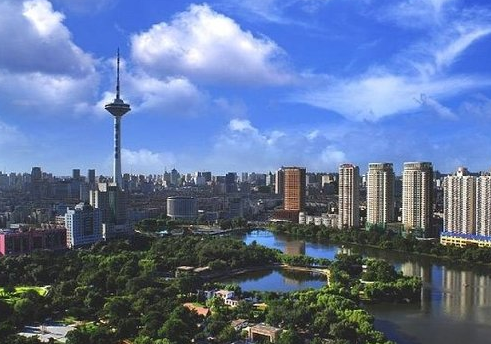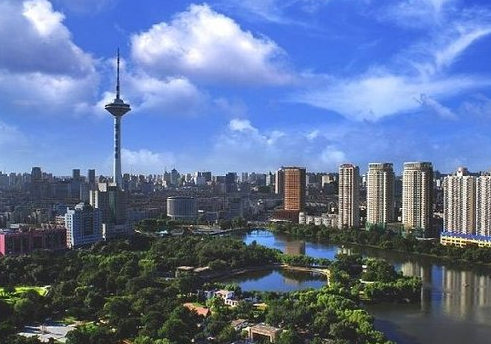
SHENYANG, May 16 (Xinhua) -- A freight train carrying containers of imported auto parts from Germany whistled as it slowly stopped at the BMW Brilliance Automotive's Tiexi plant in Shenyang, capital of northeast China's Liaoning Province.
Undergoing checks by customs officers on the site, the auto parts were transferred to a production line for assembly. Traditionally, the containers arrived at a railway station before they were transported by trucks to the plant.
"The new logistics service can not only increase the clearance efficiency but also saves our logistic costs," said Tian Lihua, director with the company's import and export department.
Allowing freight trains to stop at the door of automaker's plant is one of the latest moves Liaoning has made to attract global investors to rejuvenate its economy.
In early May, Liaoning Province issued a guideline on rejuvenation through all-round opening up, promising to further ease market access for foreign investors. A management model based on a pre-established national treatment plus a negative list will be implemented.
It will completely open up its general manufacturing sector to foreign investors, while market access to sectors like telecommunications, medical services, education, elderly care and new energy vehicles will also be expanded.
Northeast China -- Liaoning, Jilin and Heilongjiang provinces -- have been struggling for growth following the decline of their traditional heavy industries.
"Investment does not go beyond the Shanhaiguan Pass," it is said, referring to a geographical division between the northeast China and the rest of the country.
BMW Group is a pioneer foreign investor going beyond the Shanhaiguan Pass and doing well in Shenyang.
It set up the joint venture BMW Brilliance Automotive with Brilliance China Automotive Holdings in 2003 when China launched the first round of its strategy to turn its rust belt into modern industrial zones.
BMW's performance in China so far this year is promising, with sales of BMWs and Minis in the Chinese market up 7.1 percent year-on-year to 152,942 units in the first quarter, a record high.
The automaker has invested more than 52 billion yuan (8 billion U.S. dollars) in Shenyang facilities since 2009. The city has become BMW Group's largest production base worldwide.
Johann Wieland, president and CEO of BMW Brilliance Automotive, said that the key to BMW's success in China was its localization strategy. The local government offered big support to the automaker, which hopes to make a greater contribution to the local economy in the future.
"Undoubtedly, BMW has brought big economic benefits to us. But more importantly, it can teach us more advanced ideas, thinking and technology," said Dong Feng, a Shenyang official.
In addition to BMW, Liaoning has been making efforts to attract global investors to various sectors.
Last year, Michelin, the world's leading tire maker, invested 300 million euros to expand its factory in Shenyang, a city of 8.3 million residents. New Zealand company Richina started a leather industry project with a total investment of 900 million U.S. dollars in Fuxin City.
The central government rolled out new measures to revitalize its old industrial base in northeast China in 2016, and set up a free trade zone in Liaoning last year.
The economy of Liaoning is showing signs of recovery, and a growing number of global investors have started taking root there.
Statistics released from the provincial department of commerce showed that Liaoning's actual inflow of foreign investment reached 5.34 billion U.S. dollars in 2017, up 77.9 percent year on year.
The province also saw the arrival of 512 new foreign-funded companies last year, up 20.8 percent.
Du Liangsheng, an economist with Dongbei University of Finance and Economics, said that the economic recovery would be a long process.
"It is a result of economic restructuring and government efforts to create a more attractive investment environment to woo more investors," he said.




 A single purchase
A single purchase







